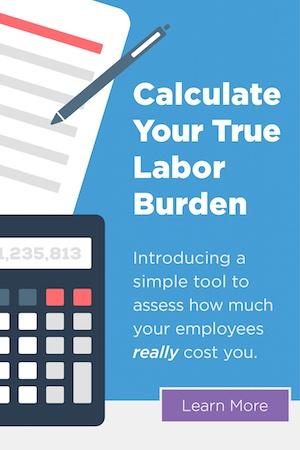Determining which employee benefits to offer, if any, is a difficult choice that many small business owners face today. Investing in benefits such as medical, dental and vision insurance, a 401k plan, and disability and life insurance for your employees could be the difference between retaining key employees and losing them to a competitor. But how can small businesses afford to offer these Fortune 500-level benefits to their employees?
Why the True Cost of Retaining Employees is So Important
In order to quantify the cost of Fortune 500-level benefits, it’s important to understand the true cost of retaining employees. As a business owner, you know that in order to retain good employees you must offer them a reason to stay. Employees in today’s workforce expect benefits, and having quality benefits just so happens to be one of the reasons why employees choose to stay with a company.
Key findings of the Who Will Build Your Future? The New Employee Relationship Report,conducted by the Harvard Business Review, showed that benefits were often used to help recruit and retain employees. 60% of the HR leaders surveyed stated that an attractive benefits package was very important for attracting and retaining quality employees for their organization.
How Can a Small Business Afford Employee Benefits?
For starters, add up your true labor burden, the financial burden of retaining an employee aside from his or her salary. Your true labor burden can help you determine just how much you could spend on employee benefits. The financial items you should consider adding include taxes, benefits procurement, open enrollment, COBRA benefits, ERISA/HIPPA compliance, report fees, software, etc. The total of these items give you a more in-depth look into how much your small business would spend on employee benefits.
Once you have determined your true labor burden, you can begin to compare benefit options. Unfortunately, small business owners, have only a few choices when it comes to affordable benefits. Here are a three common solutions that may fit for your business needs.
3 Common Solutions for Employee Benefits
Administering benefits on your own – When you offer benefits independently, you, as the business owner, serve as the administrator for your employees’ plan. But unfortunately, plan administration can take up much of your time and energy. To remedy this, some small business owners hire an in-house employee to execute and manage employee benefits. This in-house administrator would ensure payroll deductions are correct, taxes are being properly withdrawn and assume all the responsibilities of plan administration.
While this is a viable option for some small business owners, the complexities of administering benefits by a sole administrator can sometimes lead to disaster. Plan administrators have the major burden of staying on top of regulations and tax laws to keep your company out of a legal mess. Mistakes such as not deducting taxes properly and missing open enrollment for new employees can lead to costly legal issues. Therefore, administering benefits on your own could pose quite the risk in the long run.
Working with an agent – Insurance agents take the burden of finding the right employee benefits for your business off your shoulders. They do the legwork of researching insurance options to fit your company’s budget and evaluating major insurance providers. As a small business owner, having a little help to research benefits options can help you save a lot of time. But the downside to working with an insurance agent is the cost.
Typically, agents are compensated heavily for their services. As the Insurance Journal reported in 2014, agents in Texas are allowed to charge fees on top of their commission. “Texas is one of the few states that allow the agent to collect a commission and charge a fee,” according to Lee Loftis, Governmental Affairs Director for the Independent Insurance Agents of Texas. Another issue to consider is that an agent, while available to help with policy changes or additions, will not take on the administrative responsibilities of your plan. Therefore, you will still act as the plan administrator or seek out a third party to handle plan administration.
Partnering with a PEO – Professional Employer Organizations, also known as PEOs, offer custom benefits packages and handle benefits administration for their clients. PEOs manage important assets for you and your employees so you don’t have to worry about the obligations of plan administration. Plus, due to the economies of scale you receive with a PEO, small businesses are able to obtain excellent benefits at more affordable rates.
For more information about how a PEO can help your small business, download The Best Kept Secret for Small Business Success.


